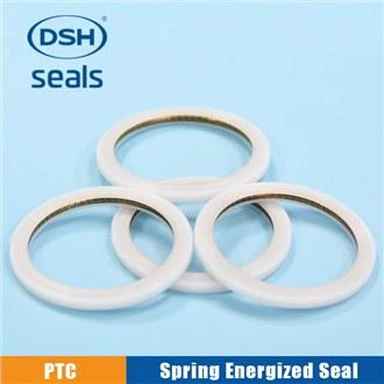How To Choose Hydraulic Seals
May 20, 2022
1. Analysis of hydraulic system
In order to correctly select hydraulic seals, it is important to clarify the working environment and requirements of the hydraulic system through a detailed analysis of the hydraulic system. Taking the hydraulic cylinder working environment system as an example, a seal device is called the system main seal, and the main seal bears the full pressure of the system. The secondary seal device is called a system seal, and under normal working conditions:
The seal does not bear the pressure of the hydraulic system or only bears very low pressure. Its low-pressure sealing performance is relatively good, and it can block the oil film passing through the main seal of the system to ensure zero external leakage; in addition, even if the lubrication is not good, the friction and wear can still be kept very low. . The lubricating performance of the main seal of the system will be better, allowing a certain thickness of oil film to pass through to ensure low friction and wear under high pressure conditions: the main seal device of the system should also have a strong oil return capacity, and the The oil film can be pumped back into the hydraulic system when the piston rod returns, maintaining dynamic balance and preventing back pressure in the system.
The main seal and the auxiliary seal of the sealing system divide the work through their division of labor, that is, the main seal reduces the pressure of the system in a relatively ideal lubrication state, and the seal realizes zero leakage to the outside under low pressure or no pressure, and at the same time achieves low friction and low wear. To achieve low friction and zero leakage in the sealing system, the key is to select the appropriate seals to cooperate with the primary seal and the secondary seal. If the two elements are randomly connected in series to form a sealing system, the expected effect will not be achieved, that is, the formation of back pressure, and the performance may not be as good as using a single seal.
2. Clarify the characteristic requirements of seals
The primary seal assembly is subject to high system pressure and should have the following characteristics:
(1) High pressure resistance, the material of the seal should have high performance mechanical strength.
(2) Low friction and wear, the material of the seal should have a low coefficient of friction and high wear resistance, and the design of the seal ensures that it works under better lubrication conditions.
(3) The oil return ability is strong, which ensures that the oil film brought out can be brought back to the inside of the system during the return trip, so as to achieve dynamic balance and prevent the formation of back pressure.
(4) Pressure relief function, that is, the seal has the function of a one-way valve. When the system pressure is low or drops to zero, the back pressure that has been formed can be reduced immediately to prevent the occurrence of trapped oil.
As a secondary seal, the secondary seal can withstand low pressure or no pressure, and its main function is to block the oil film passing through the primary seal to achieve zero leakage. The seal shall have the following characteristics:
(1) Good low-pressure sealing performance.
(2) Low friction and wear at low pressure.
(3) It can withstand the high pressure of the system for a short time, that is, it can work reliably even when the back pressure is formed in severe working conditions.







